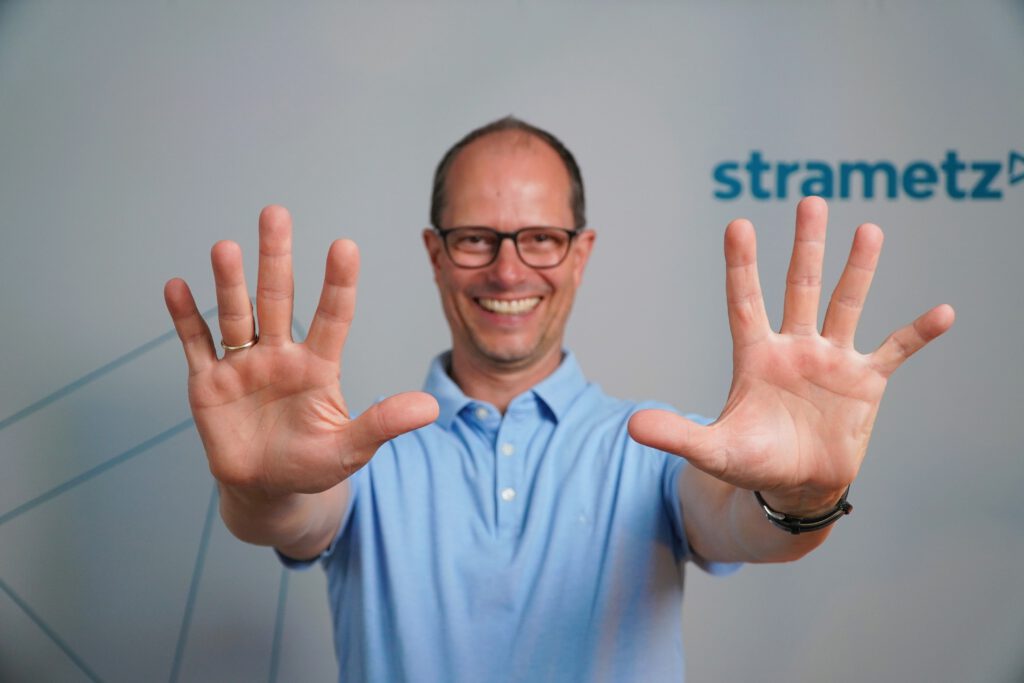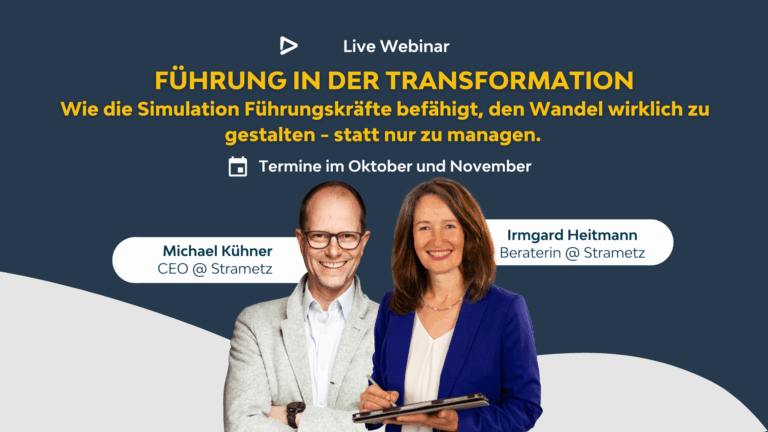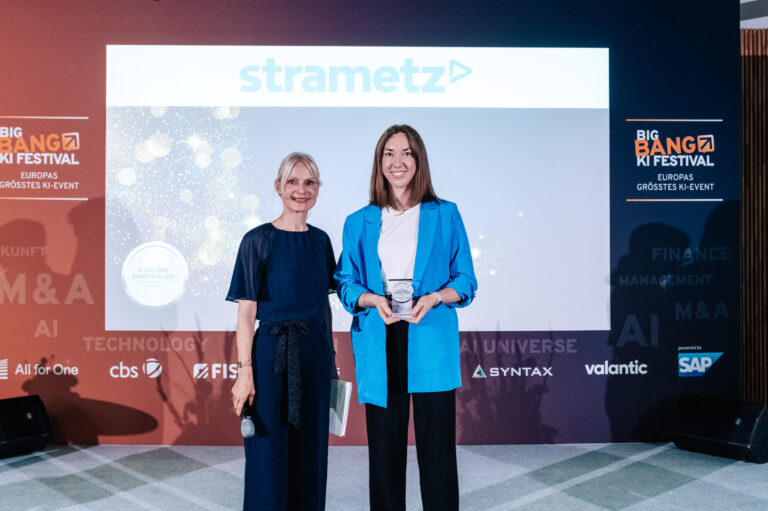Leadership Simulation – what is that actually?
Many aspiring, as well as seasoned, leaders want sustained development and honest feedback on their day-to-day leadership skills. They want to learn not only in terms of content, but also in practical terms.
The Strametz Leadership Simulation provides a protected, interactive experience space to reflect on one’s own behavioral patterns and discover alternative courses of action. Participants experience leadership outside of their usual context, both in challenging
situations as well as in different roles. You can try out several settings of the Leadership Simulation, train different leadership competencies and experience their effectiveness. Appreciative feedback and reflection rounds give participants security for their everyday leadership and clarity about their next development steps.
10 Reasons Why Leadership Simulation Will Take Your Leadership Development to the Next Level
In our video, Managing Director Michael Kühner gives you an insight into the special features of Leadership Simulation and why it is so effective in leadership development programs.
Realistic leadership complexity and dynamics
Due to the growing dynamics and complexity in the world of management, formats are needed that reflect this world in a correspondingly realistic way. In our leadership simulation, we depict a company’s everyday life in which various challenges, tasks and requirements for managers are condensed. Due to the situational control of our consultants, every situation is different, so no two simulation rounds are the same.
Experience space for action patterns
It requires an experiential space to be confronted with one’s own behaviors. In everyday work, it is almost impossible to recognize new possibilities from one’s own patterns of action. This is due to the lack of reflection within the daily rhythm of work. In our simulations, we create experimental and experiential spaces from different perspectives to allow participants to recognize patterns of action. We initiate change through constructive, appreciative feedback.
Trial and error approach to challenges and surprises
A simulation is an ideal format for building the courage to leave proven but outdated behaviors behind and venture into uncharted territory. Surprising moments and challenges, which we create in the simulation, have to be mastered away from the usual professional framework. In this way we create and strengthen confidence in our own actions, in our own person, in order to be able to meet new challenges competently. In this way, talents and managers learn to productively use the restlessness of an existing dynamic.
Training of new competences
Today, there is less demand for competencies that perform tasks that can be planned, are reliable, and are the responsibility of others. Instead, new competencies are needed that open up choices, encourage differences, deal with surprises and mistakes, generate trust, delegate responsibility, and bring about decisions rather than making them alone. In self-experiencing settings – such as in the Leadership Simulation – participants can experience, train and critically reflect on all this.
Focus on leadership skills
Leaders must deal with uncertainty while providing guidance. The non-technical context of our simulation provides the perfect training basis for this. Accompanied by challenges that managers know from their everyday work, participants learn to apply iterative solution strategies. This is a very effective effect in simulations: Due to the absence of the familiar, safe, professional framework, the participants have to concentrate on leadership behavior.
The interaction of people and performance
Both performance and people factors are introduced and reflected in a simulation. Employee and performance perspectives are equally important and are made measurable and visible. It is appreciated by the participants when the interdependencies of these dimensions are also experienced and discussed.
Feedback and reflection diversity
Good reflective leadership is needed today more than ever. In order to be able to successfully shape a situation, managers must permanently ask themselves in tense situations what the company, the team and the manager himself need. In our simulation, we offer a large reflection space with proven and structured feedback processes – always with multiple stakeholders. At the same time, we offer different roles so that leadership is constantly reflected from different and changing perspectives.
Ambidextry: ambidextrous leading
Managers must be able to deal appropriately with areas of tension: Flexibility versus stability and reliability, individual needs versus joint commitment and goal achievement. Thus, ambidextrous guidance is gaining in importance. When do I as a manager have to set framework conditions or limits? When do I need to show restrictive or closing leadership behaviors? When do I need to open up spaces and show possibilities, promote potential? When does a leader need to demonstrate opening behavior? Using concrete action situations taken from everyday life, managers and talents can best experience this, practice it and develop it further together with others.
High and simultaneous activity level
Particularly valuable in a group simulation is that all participants are active at the same time – there are no spectators. This is extremely effective. Participants say after the training that they were very challenged, constantly in action, and could not sit back as seminar consumers. They also reflect to us that this was experienced as very positive and that the time flew by in no time – as is not usually the case from trainings.
Social learning with action and fun
In contrast to the many individual e-learning sessions, participants want to learn together with others, be challenged but not overwhelmed, have action in the training and not be bored. They want to be challenged, have their own experiences, receive benevolent feedback – and not be lectured. From self-knowledge through experience and feedback comes motivation for change. And only from this is truly effective development possible. Everything else is put on.
Positive impact on participants and companies
Our participants and the companies confirm time and again the lasting positive impact of the Leadership Simulation on everyday leadership and thus on corporate development. Self-awareness and the resulting motivation to change make the Strametz Leadership Simulation an indispensable part of effective and sustainable leadership development.
If you want to learn more about Leadership Simulation, check out our solutions. Here we show you the methodology behind Leadership Simulation and the variants we offer for your leadership development.











